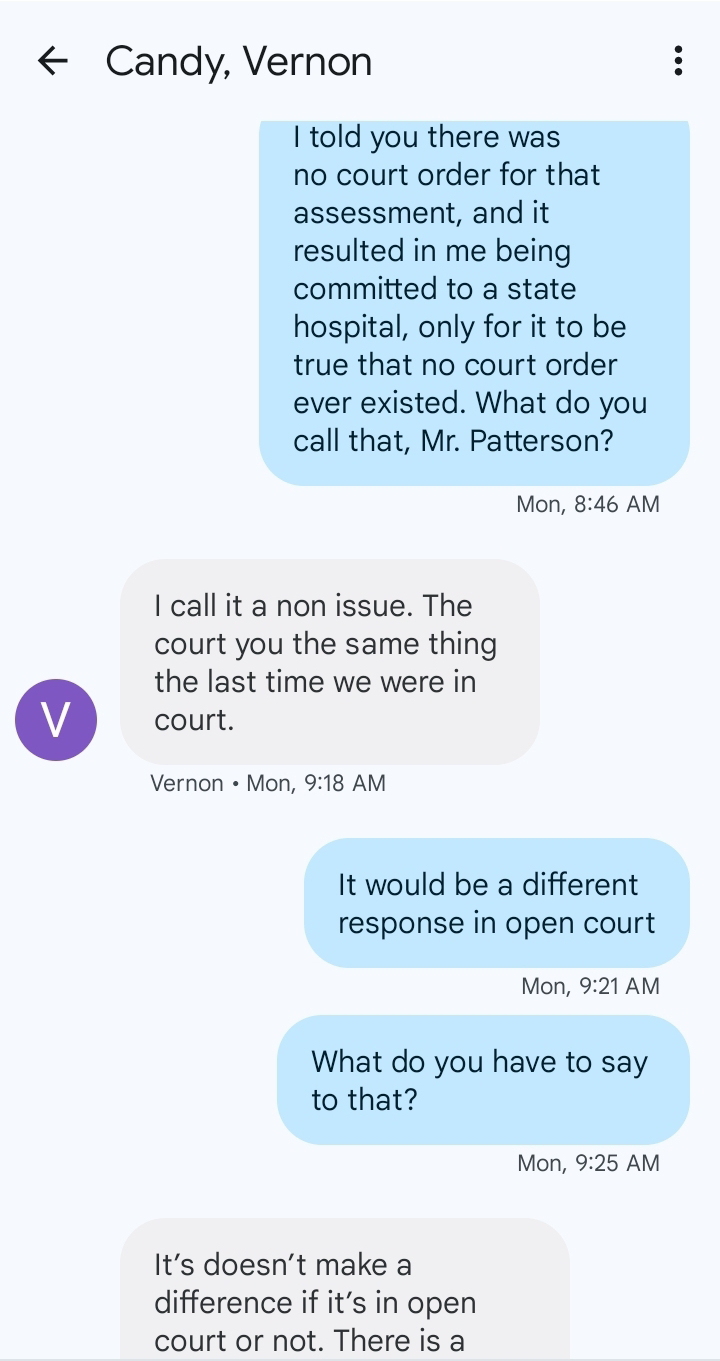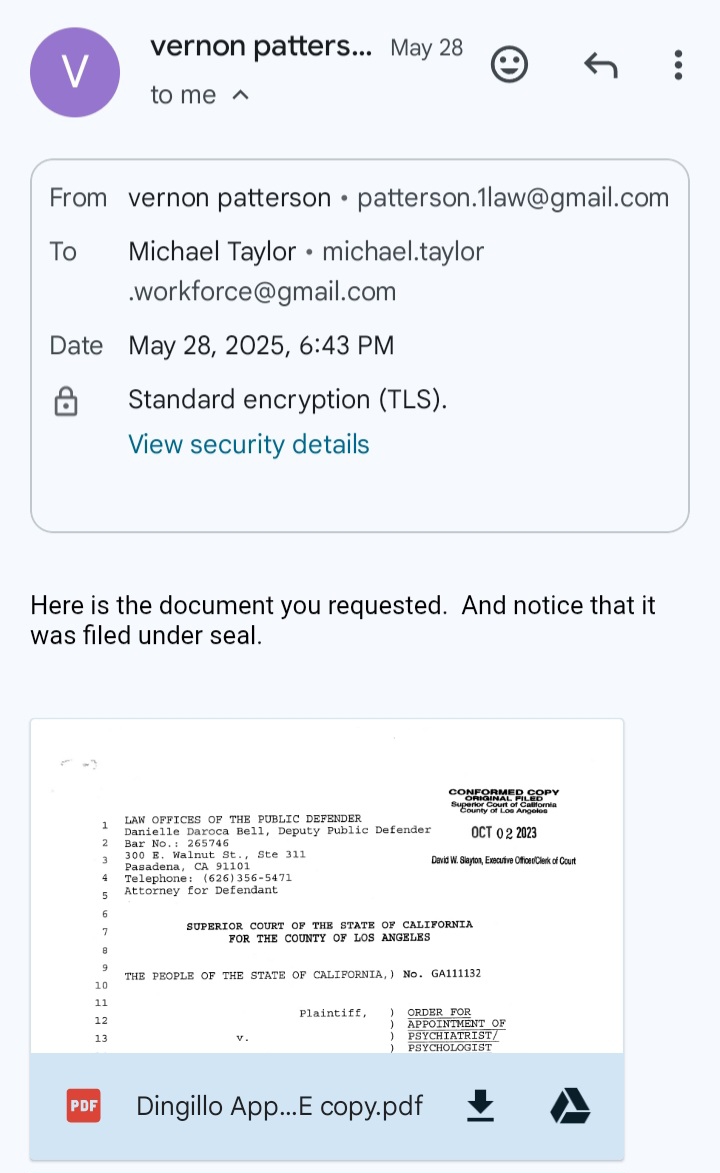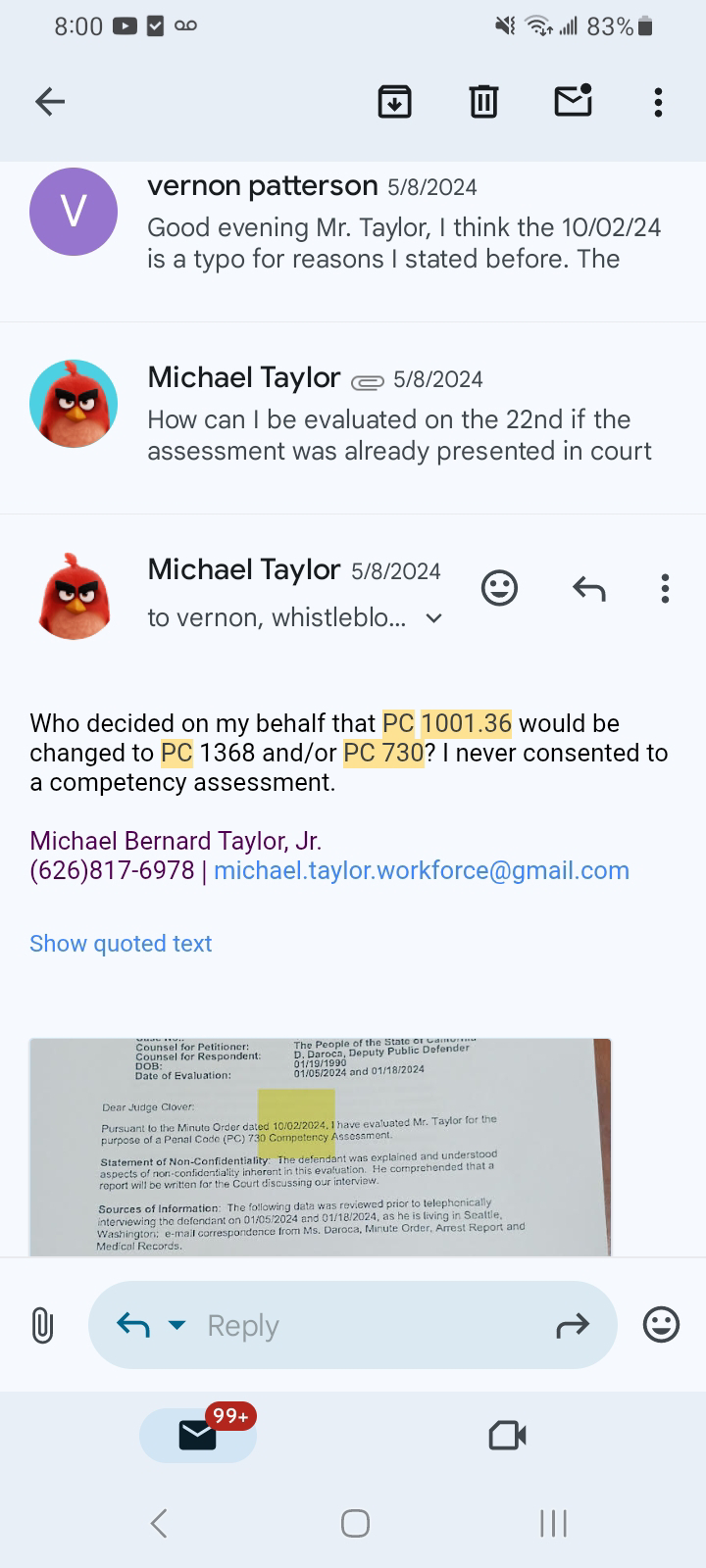EXCLUSIVE INVESTIGATION
"Fraud Upon the Court: How the People v. Michael Taylor Case Exposes a Judicial System in Crisis"
By ThaWilsonBlock Magazine Investigative Team
Pasadena, CA – In a quiet courtroom at the Pasadena branch of the Los Angeles County Superior Court, a case that began as a routine criminal prosecution has now erupted into a far-reaching constitutional crisis. New evidence and court documents obtained by ThaWilsonBlock Magazine suggest that in People v. Michael Taylor (Case No. XNEGA111132), the court may be actively concealing violations of its own judicial orders—raising red flags about judicial integrity, attorney collusion, and systemic abuse of mental health evaluations to silence defendants.
At the center of the storm is Michael Taylor, a pro se defendant who has meticulously documented what he says is a fraud upon the court—an unconstitutional act that nullifies all subsequent proceedings. His evidence points to a judicial system leveraging mental health proceedings not for justice, but for control.
The Missing Court Order
In 2024, Michael Taylor was subjected to a psychiatric evaluation by Dr. Pietro D’Ingillo, which ultimately led to his involuntary commitment to a California state hospital. However, as Taylor consistently asserted for over a year, no valid court order had ever been issued authorizing that evaluation.
And then came the bombshell: in May 2025, a sealed court order finally surfaced—months after Taylor had been hospitalized and after a bench warrant was issued for his failure to appear. The sealed order, dated October 2023, restricted any use of privileged information obtained during consultations under Evidence Code §§ 730, 952, and 1014. Yet Dr. D’Ingillo’s report relied precisely on that privileged information.
Judicial Deception or Systemic Failure?
Legal experts say the case raises critical questions. "If an evaluation was conducted without an order and used to suspend criminal proceedings, that's an egregious due process violation,” said one retired appellate lawyer. “It’s not just a technical error—it's unconstitutional.”
What makes the situation worse is the role of Taylor’s own court-appointed counsel, Vernon L. Patterson. In a recorded conversation dated May 12, 2025, Patterson admits there was no order authorizing the evaluation and dismisses the issue as a "non-issue." By the following day, he is already scheduling a new evaluation—this time with Dr. Jack Rothberg—before the judge had even signed the order.
A new order was signed on May 14, 2025, by Judge Michael D. Carter, but by then, the constitutional damage was done.
Weaponizing Mental Health Law
The use of mental health law in this case appears to have been distorted to suspend Taylor’s rights. Under California Penal Code §§ 1368 and 1369, a judge must declare a doubt as to a defendant’s competency before ordering an evaluation. No such declaration appears in the record. This procedural step is not a formality—it is the legal basis for the court’s jurisdiction to detain or evaluate anyone.
Meanwhile, laws like the Lanterman-Petris-Short (LPS) Act and HIPAA were allegedly bypassed. The unauthorized disclosure of Taylor’s privileged communications for court use is not just a breach of medical confidentiality—it may be a felony under both state and federal law.
The use of this improper report to detain Taylor between October and December 2024 also obstructed his right to vote in the federal election. Combined with ongoing interference with his access to federal courts to pursue a §1983 civil rights claim, Taylor argues that the state is using procedural delay to erase substantive constitutional claims.
When Silence Becomes Complicity
Perhaps most shocking is the silence from oversight institutions. The California Attorney General’s office has ignored multiple complaints. Public defenders in the case either deflect or downplay critical constitutional issues. The Commission on Judicial Performance has remained silent—despite a disturbing connection: Commissioner Beatriz E. Tapia, appointed by Governor Newsom, is the sister of Judge Sergio C. Tapia II, the judge who presided over Taylor’s preliminary hearing.
This familial tie raises serious conflict-of-interest concerns about whether the complaint process itself is impartial.
The Court’s Strategy: Procedure as a Weapon
According to legal analysts consulted for this report, the court’s strategy appears to be one of "weaponized procedure." By refusing to address Taylor’s claims on the merits, the court preserves the appearance of order while concealing a lack of lawful jurisdiction.
Every attempt by Taylor to demand accountability is met with a procedural barrier: sealed hearings, denied filings, ignored motions. Even when a clear judicial error is brought to light—such as the absence of a court order authorizing a medical evaluation—the court remains silent.
“Procedure is being used as a shield to block exposure of unconstitutional acts,” says one legal ethicist. “It’s not justice—it’s survival mode for a corrupt institution.”
Has the Defendant Already Won?
Despite the court’s continued refusal to dismiss the case, legal experts believe Taylor’s defense is already unassailable. The unauthorized use of a mental health evaluation, the concealment of a court order, and the resulting deprivation of liberty and civil rights create a picture not of guilt, but of state-sponsored misconduct.
In a system based on law, these events should collapse the case entirely.
A Call for Federal Oversight
Taylor has filed notice complaints with federal judges and agencies, seeking emergency relief. Whether or not they intervene, his case has become a landmark example of how courts can exploit mental health law to violate rights while avoiding accountability.
It’s a system that depends on silence. And Taylor’s relentless documentation, filing, and public exposure has become its greatest threat.
---
“This case is bigger than me,” Taylor said in a recent statement. “It’s about restoring integrity to a system that forgot its purpose.”
The outcome of People v. Michael Taylor may determine more than a man’s freedom—it may test whether our judicial institutions still serve the people, or only themselves.








Comments
Post a Comment